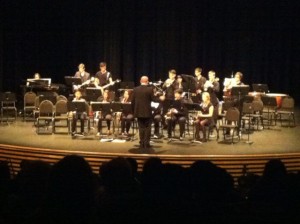Ratios, Ranges, and Caps in Education
Peter Cameron, BCPSEA’s Chief Negotiator, seemed to call for a cone of silence today for Trustees when it comes to bargaining issues in the public education sector.
While I can appreciate his frustration with diverging viewpoints (solidarity matters to both parties at the bargaining table), there are many issues not being discussed in a larger context which may, in part, explain why negotiations are so acrimonious.
Which brings me to the topics I’d like to explore here: ratios for non-enrolling staff and specialist teachers, class size, and class composition.
Why?
Because if we talked about these issues in a meaningful way, apart from contract negotiations, perhaps we wouldn’t be in the same spin cycle of labour unrest every few years.
This is not an empirical study, nor an exhaustive analysis of the subject, nor does it represent the views of the West Vancouver Board of Education. These are merely personal reflections intended to stimulate debate.
Ratios for Non-Enrolling Staff and Specialists
To frame this discussion, I think we need to consider the minimally acceptable service levels for positions such as teacher-librarian, counsellor, special education teacher and so on.
Having said that, I realize that we must first agree on which of these roles is integral to providing a quality education for students. We can then determine the appropriate ratios. However, these ratios would have to reflect the needs and the realities of each local community. What may be needed in Vancouver, for example, may not work in Williams Lake, and what may be sufficient in Fort Nelson may not work on the Sunshine Coast.
Now that I think about it, perhaps this piece of the puzzle is not so easy after all!
Class Size
The key question here is can we find a balance between the needs of the employer, the working conditions for a teacher, and the students’ learning conditions? For example, if a cap of 24 students is set for Grade 3 and a school has two fully subscribed classes of 24, what happens when someone moves into the neighbourhood and wants to place their child at the local school? Does a class of 25 present a significant deterioration in the working and learning conditions of the teacher and the students? Well, it may and it may not — it depends. An even more basic question is how do we even determine the optimum number of students in a classroom?
Rather than a singular number, I wonder if a range could work within the context of a collective agreement. For example, would it be possible to have a provision whereby a Grade 3 class can be anywhere from 15 to 28? Or 18 to 26? Whatever the range, provisions would also have to be considered regarding the process by which one were to go over or under – a process which balances the rights of the District with the working conditions of the teacher with the learning environment of the student.
There are also a myriad of exceptions to consider from classes that may have a defined capacity (such as foods and shop) to ones which may comfortably extend beyond a specified range (such as choir and band).
Given the many different factors to consider, you can see how difficult it becomes to distill class size down to a singular number which would apply in all situations in all regions of the province.
Class Composition
Of the three components I identified at the start, I find this one the most difficult to assess. The key question seems to be how do we set up a system which does not discriminate against our most vulnerable students and yet takes into account acceptable working conditions for a teacher? But I do know that by not addressing class composition issues, we are potentially compromising the education of all the students in a particular classroom.
I believe the answer lies in ensuring adequate support services and resources in the classroom. By that I mean if we are going to removing a limit on the number of special needs students in a classroom, we need to make sure the teacher in that classroom has additional help, whether in the form of special education assistants or education assistants (SEA or EA) or other specialist support, to meet the needs of all the students.
So, rather than saying there may only be three students with individual educations plans (IEPs) in one class, perhaps we have to say for every three IEPs in a classroom, there is one SEA or EA assigned to that classroom. But then we face the challenge of determining the demand associated with any particular IEP because the nature of the adjustments or assistance required can vary substantively. In addition, not every student who needs additional support has an IEP and it is often these students whose needs remain unmet not because of the teacher, but because of inadequate resourcing.
And yes, whichever remedies we put in place with regard to non-enrolling staff ratios, class size, and class composition will take money, a lot of money. But we are talking about 558,985 children in BC and we are talking about the future of our democratic society and no I’m not exaggerating.
And as much as our provincial government may be focused on shrinking public education to help reduce the amount it spends, the price of not doing education well is too high to pay, for all of us.
2014 Bargaining: A Primer On Timing
As one school year draws to a close and another looms, I know many are trying to understand where we are when it comes to bargaining.
Why?
Because families plan ahead and they need to factor in those issues which may have an impact on their lives and the lives of their children. One of those issues is the outcome of labour negotiations in the public education sector and the current status of job action.
I won’t attempt to explain the positions of the parties; I just want to provide some clarity around timing as I see it.
The government and Boards of Education, via the BC Public School Employers’ Association (BCPSEA), are currently negotiating with the BC Teachers’ Federation (BCTF) on a new contract.
Both sides have stated their interest in achieving a negotiated settlement by the end of June 2014. It’s not known at this point how long the deal would be for although the last public position of the BCTF was for a four-year term while the government maintains that a 10-year term is its goal.
Earlier this spring, in response to what was seen as lack of movement at the bargaining table, the BCTF took a membership-wide vote which approved a three-phase plan for job action:
•Phase 1 – a province-wide disruption of communications with administration and the disruption of supervisory duties. The BCTF has activated Phase 1 which is currently in force.
•Phase 2 – This escalation, which is proposed but which has not been initiated, would involve rotating one-day strikes. If the BCTF invokes Phase 2, they will provide 48 hours notice to any District which will be subject to a one-day walkout.
•Phase 3 – full work stoppage. If Phase 2 is invoked and if there is still no progress at the bargaining table, the BCTF will contemplate escalating the job action. Prior to doing so, they have committed to holding another vote for their membership to approve the plan. If at that point the union gets majority support from its members for a full work stoppage, it will be required to supply Districts — and consequently families, guardians, and caregivers — across the province with three business days’ notice.
That’s a summary of where we’re at today.
Between now and the end of this school year we may or may not see a settlement and we may or may not see an escalation of the job action. Unfortunately, that’s the uncertainty with which we must all contend.
If a settlement is reached by June 30, then it will encompass a multi-year term and school will begin in September without any issue.
If a settlement is not reached by June 30, I think there are two scenarios we’ll face although there are probably others which are just as likely. We’ll either have an escalation to Phase 2 of the job action before the end of this year or, depending on how things unfold and allowing for the summer break, we could have some disruption at the beginning of the 2014-2015 school year.
Given the BCTF’s commitment to holding a full vote, I can’t imagine getting to Phase 3 of the job action prior to June 30 unless the BCTF were to leapfrog the idea of rotating strikes — and that would be publicly unpalatable — or the time lapse between the final two phases were significantly compressed.
In the event of a full work stoppage, I believe the government would act swiftly and that would likely mean the least promising outcome of this lingering dispute: a legislated settlement which sends teachers back to work while leaving much unresolved.
A shut down of the public education system would be disproportionately disruptive to students. That is, there will be students — such as my child — whose time will be filled with alternative plans and activities. However, there will be many, many students and families who will be faced with significant consequences and to whom a strike will represent hardship.
And that’s why I strongly urge BCPSEA and the BCTF to tread carefully, yet with a sense of urgency, and to settle by June 30, 2014.
If you’re interested in more of the background to public education bargaining, here’s a very well-written recent article by Katie Hyslop in the Tyee.
A Man For All Seasons
Author’s Note: I’m sad to report that FUB passed away on May 27, 2014. The world is a dimmer, duller place without him.
There is a man I know.
His name is Robert.
Bob.
Or as we like to call him FUB – Funny Uncle Bob.
Funny because he is witty and bright. Even in a serious discussion with Bob, there will come a point when you find yourself laughing. Maybe a chuckle, but more often than not a belly laugh, a laugh from the heart.
Bright because he is a spark. He creates, he paints, he draws, he writes. He is an artist, an inspiration, a giver, a friend, a husband, a father, a grandfather.
He’s not actually my uncle, but the dearest and closest of family friends. If I were to ask my parents, I’m sure they would recall the moment when they first met Bob and his wife Carol. For me, and I think for my sisters, it’s as if Bob has always been there. There is no first moment, there just is.
In 2010 my parents received the Ramon John Hnatyshyn Award for Voluntarism in the Performing Arts. Each recipient of a Governor General’s Performing Arts Awards is allotted a number of tickets to the events held for honourees. The number in our group exceeded the limit because my father lobbied to ensure he could include Bob and Carol.
Our four days in Ottawa were magical. From evenings in the bar, to Question Period in the House, to receptions and galas, Bob’s wry gaze, Bob’s singular perspective, Bob’s irreverence enhanced and enlivened every moment.
Bob’s generosity of spirit has spilled over into his interactions with my son who is an emerging artist. During a visit to Hornby Island in 2008, we went on walks together and we would sketch en plein air to capture the golden aura of Helliwell Park and the shimmering blue of the ocean. I was even required to join in and put pencil to paper!
Bob also sat down with my son indoors and they drew together in the creative stillness of common purpose. It was mentorship of a seven year-old to show what it means to observe as an artist, to be diligently aware of your surroundings, and how to express what you’ve seen for others to experience.
This past summer, my mother, my son, and I went out to visit Bob and Carol at their home. It was an opportunity for my son to see Bob’s studio, to have a look at Bob’s world, the world of a successful artist. My son was whisked away upon arrival and when the two rejoined us for lunch, my son was clutching canvases, drawing paper, and pens. Gifts from one artist to another with the most priceless one being the encouragement to do.
That’s FUB.
That’s Bob and he has decided to discontinue chemotherapy. He is at home with his family and he is embraced within a circle of love which extends beyond the boundaries of time and place.
His name is Robert.
There is a man I know.
And thus it shall be forever.
Class Size and Composition: A Birthday Party Analogy
Issues of class size and composition tend to polarize the discourse about public education.
These issues are complicated because ideological positions inform much of the debate which is often emotional, replete with language around justice and economics, anxiety and flexibility, discrimination and fairness.
They also encapsulate a tug of war between the needs of students, the workload ramifications for teachers, the expectations of parents, and the managerial criteria of governments.
I want to explore these issues using the analogy of a birthday party.
Why?
Because we’re stuck in a gladiatorial arena where arguments on class size and composition are discussed in terms of competing narratives.
This restricts our ability to forge solutions and negotiate settlements rather than helping us forge fair and equitable resolutions. So why not try a different lens?
Let’s take a typical six-year-old in British Columbia who is turning seven. Which is easier to host: a birthday party for 12 or a birthday party for 20?
All factors being equal, one would be inclined to say a party of 12.
But wait. What if you have to tend to all the details for a party of 12 with no help? That could be much more work than booking a birthday package for 20 at a local community centre where all, or most, of the details are taken care of.
However, what if that group of 20 at the recreation centre includes a handful of children who do not take well to group activities? It may still be less work, but it may be as stressful as, or more stressful than, the small party for 12 at home. And that small party of 12 at home might be a lot less work if you have the help of family members and friends.
This may be a frivolous analogy, but it demonstrates a key idea: class size is important, but it’s not the only factor to consider with regard to structuring a successful learning environment. That’s why those who claim that class size doesn’t matter, in my opinion, are erroneously emphasizing short-term economic efficiency. Those who claim class size can be addressed as a formula are prioritizing workload considerations.
I think we need to figure out a new system for public education, one which supports smaller class sizes, allows the flexibility for larger class sizes where supportable, and in all cases supplies the resources and help required to ensure an optimum learning environment. In my imagined structure, a school district may very well have Grade 1 classes of differing sizes whether of 6, of 12, of 20, of 24, and even, depending on many other factors especially support services, 30.
Wait a second.
I overlooked the most important question.
Whose birthday party is it? What type of birthday party does the child want? Is he an introvert better-suited to small gatherings at home? Is she an extrovert better suited to a significant gathering with lots of activity and her as the centre of attention? Alternatively, would he or she really rather not bother with a party at all even at six years old?
Unfortunately, that’s the question which is often overlooked in the fractured and fraught discussion about class size and composition.
And yet, it is about the kids. Isn’t it?
A Song for Education
Given today’s events in the divisive and frenetic world of the public education system in British Columbia, I was inspired to adapt one of my all-time favourite songs for the occasion.
Sung to the tune of “One Tin Soldier” (with my apologies to the original song-writer and performers), here’s my version entitled “A Negotiated Contract”.
“Listen children to a story
That was written just today
‘Bout a letter in a paper &
The leaked doc here to stay
In the letter were some answers
Rescued from beneath the spin
And the so-called leaky memo
Claimed the media for the win
Go ahead and trip your neighbour
Go ahead and beat a drum
Do it in the name of victory
You can justify it in the sum
There won’t be any bargainin’
Come tomorrow day
And the drizzly morning after
A negotiated contract slips away.”




